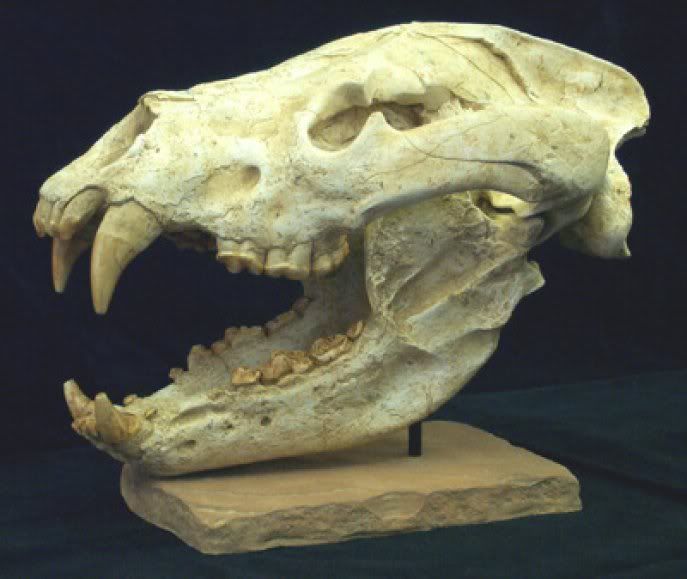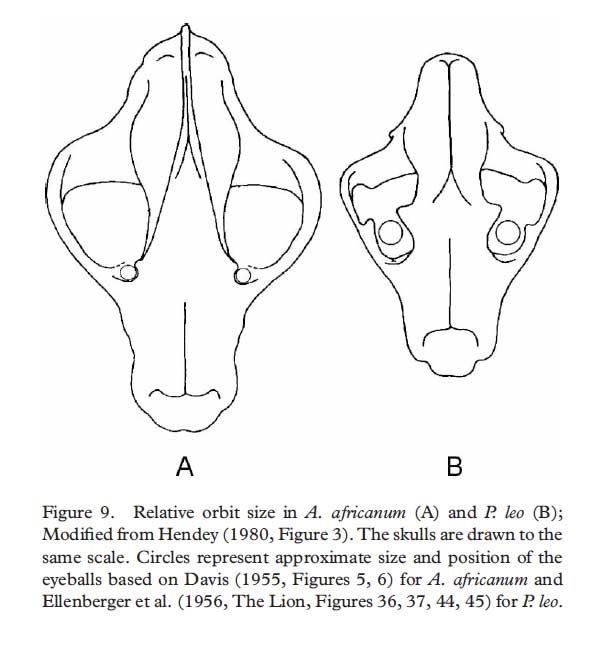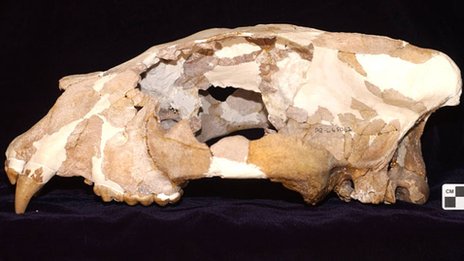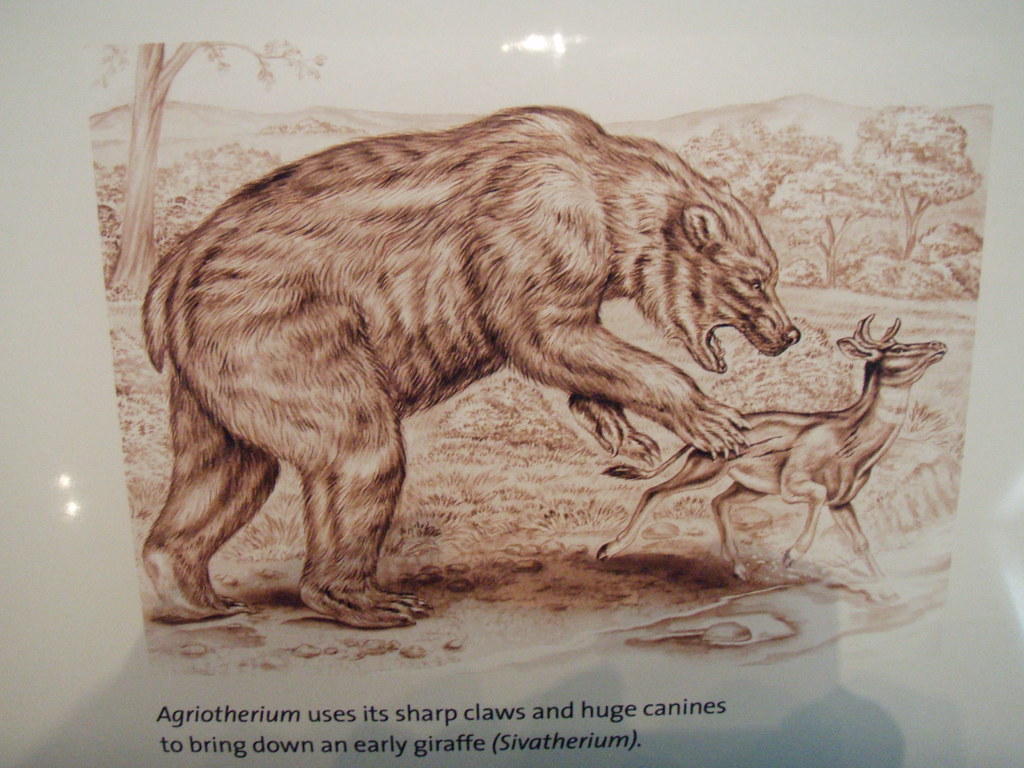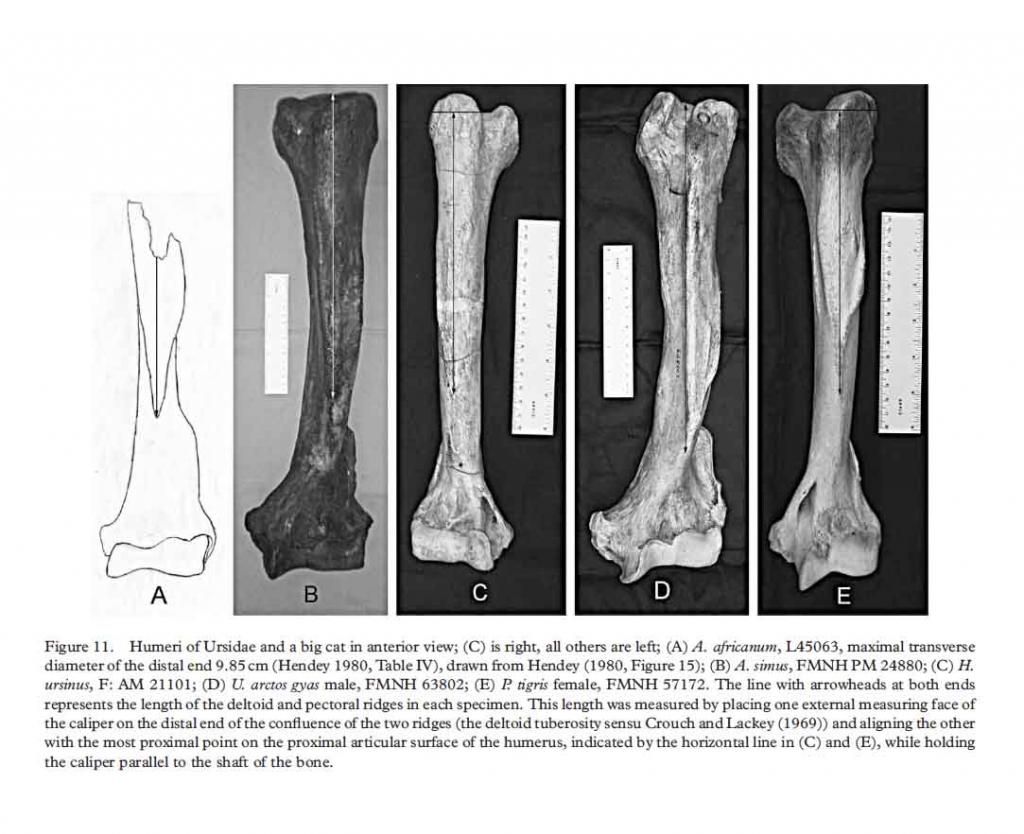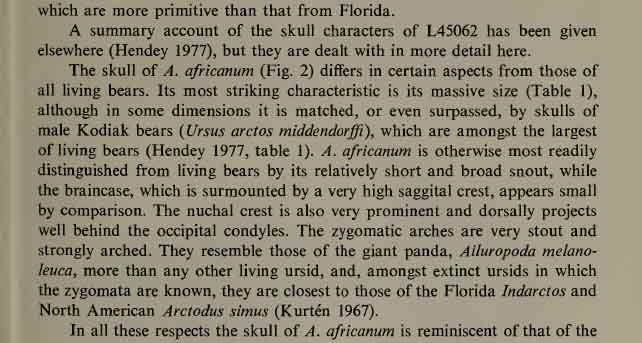Post by grrraaahhh on Nov 20, 2011 17:11:11 GMT -9
Kingdom: Animalia
Phylum: Chordata
Class: Mammalia
Order: Carnivora
Family: Ursidae
Subfamily: Ursinae
Genus: Agriotherium
Agriotherium was a genus of bears that lived during the Miocene (23.03 - 5.33 million years ago) and Pliocene (5.33 million - 1.8 million years ago)periods. [Note - Wagner named the genus in 1837.] These bears were extremely wide ranging. They inhabited Africa, Europe, Asia, and North America. Fossils of them have been found in the U.S.A., Mexico, China, Ethiopia, South Africa, India, Spain, France, Poland, and the Ukraine. There were several species; one was Agriotherium africanum. It entered Africa from Eurasia about 6 million years ago and spread all over the continent. Fossil remains of 36 specimens were found in the PPM bed in the Varswater Formation at Lang E. Quarry in South Africa. They date to the Pliocene.
Fossils of Agriotherium have been discovered in several states in the U.S.A. For example, remains of Agriotherium sp. were found at Lost Quarry in Wallace County, Kansas. They date to the Miocene. The age estimate is 8.4 - 7.6 million years ago (AEO). Other Agriotherium sp. fossils have been unearthed in Arizona, California, Nevada, Nebraska, and Texas. Remains of Agriotherium schneideri were found in Florida and Mexico. Agriotherium was about 2 m. (6.56 feet) long. It was an efficient hunter, but was probably omnivorous.
Species:
Agriotherium africanum
A. sivalensis
A. schneideri
A. inexpectans
A. sp.
Source: Paleobiology Database.
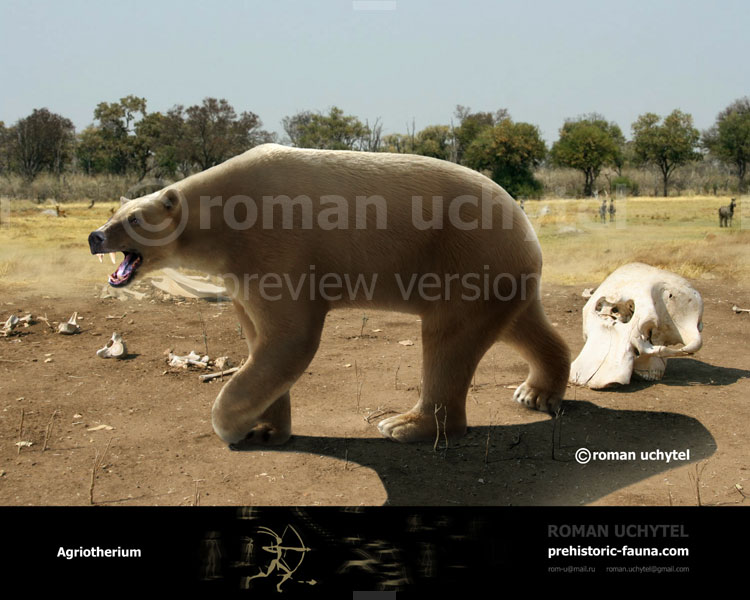
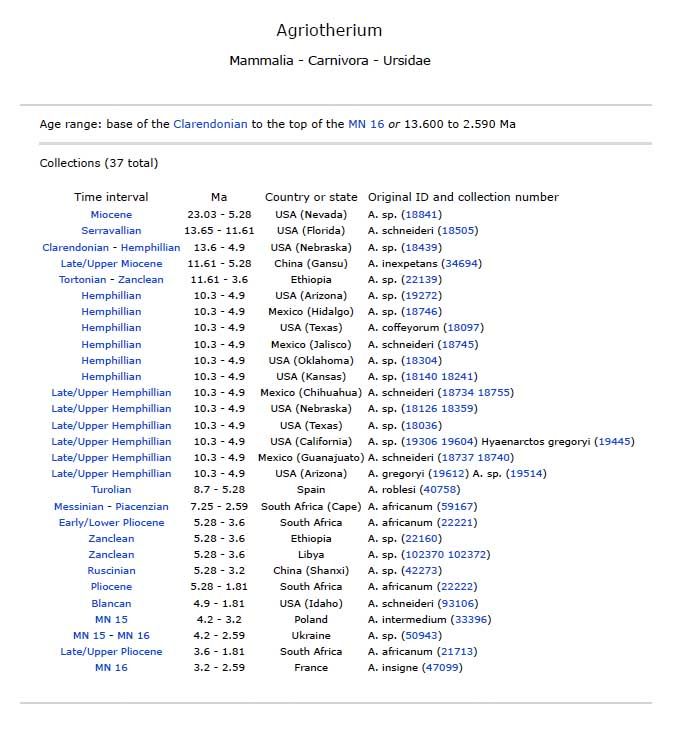
Distribution of fossil sites
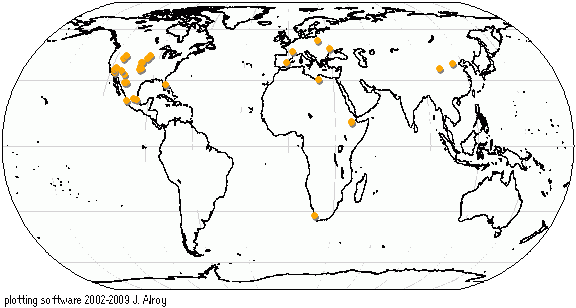
Source: Paleobiology Database.
Phylum: Chordata
Class: Mammalia
Order: Carnivora
Family: Ursidae
Subfamily: Ursinae
Genus: Agriotherium
Agriotherium was a genus of bears that lived during the Miocene (23.03 - 5.33 million years ago) and Pliocene (5.33 million - 1.8 million years ago)periods. [Note - Wagner named the genus in 1837.] These bears were extremely wide ranging. They inhabited Africa, Europe, Asia, and North America. Fossils of them have been found in the U.S.A., Mexico, China, Ethiopia, South Africa, India, Spain, France, Poland, and the Ukraine. There were several species; one was Agriotherium africanum. It entered Africa from Eurasia about 6 million years ago and spread all over the continent. Fossil remains of 36 specimens were found in the PPM bed in the Varswater Formation at Lang E. Quarry in South Africa. They date to the Pliocene.
Fossils of Agriotherium have been discovered in several states in the U.S.A. For example, remains of Agriotherium sp. were found at Lost Quarry in Wallace County, Kansas. They date to the Miocene. The age estimate is 8.4 - 7.6 million years ago (AEO). Other Agriotherium sp. fossils have been unearthed in Arizona, California, Nevada, Nebraska, and Texas. Remains of Agriotherium schneideri were found in Florida and Mexico. Agriotherium was about 2 m. (6.56 feet) long. It was an efficient hunter, but was probably omnivorous.
Species:
Agriotherium africanum
A. sivalensis
A. schneideri
A. inexpectans
A. sp.
Source: Paleobiology Database.


Distribution of fossil sites

Source: Paleobiology Database.


